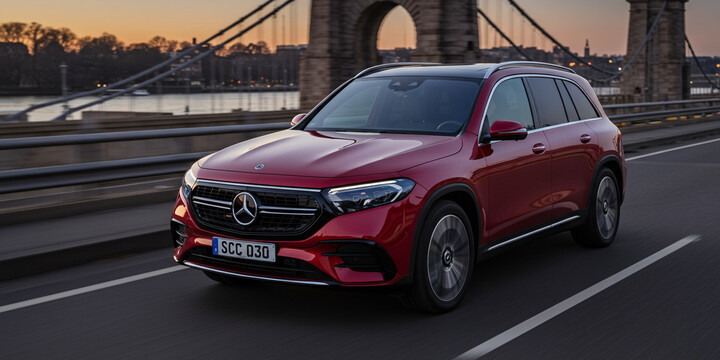
MERCEDES-BENZ EQB (2023-) EQB300 4MATIC 5DR SUV 0.0 ELECTRIC 66.5KWH 228 AMG LINE PREMIUM AUTO
The Mercedes-Benz EQB (2023-) EQB300 4MATIC 5DR SUV is a stylish and versatile electric vehicle that stands out in the UK's growing market for eco-friendly family-friendly SUVs. As an all-electric SUV, it offers a smooth, quiet driving experience with zero emissions, making it an excellent choice for environmentally conscious drivers. Designed with practicality and comfort in mind, the EQB300 competes well against rivals like the Audi Q4 e-tron and Volkswagen ID.4, offering a combination of luxury, performance, and modern technology. Its spacious interior and advanced features make it ideal for families, daily commuting, or those seeking a premium electric vehicle with enough room for passengers and cargo.
This model is best suited for those who want a reliable, stylish, and efficient vehicle that balances everyday usability with a touch of luxury. The AMG Line Premium trim adds a sporty and sophisticated edge to its design, complemented by high-end interior features that enhance comfort and driver engagement. Known for its premium build quality and advanced safety features, the Mercedes-Benz EQB 300 offers a tempting package for drivers looking to transition to electric while enjoying Mercedes-Benz's renowned brand reputation. With an average valuation of around £37,355 based on recent data, the EQB300 is a standout choice for modern, environmentally aware motorists seeking a practical yet luxurious electric SUV.

average use

The data indicates that all the recorded vehicles of the Mercedes-Benz EQB 300 4MATIC (2023) model, specifically the AMG Line Premium Auto, have mileage readings of between 0 and 10,000 miles. This suggests that these vehicles are very new or have been minimally driven, which could be useful information for buyers or insurers seeking low-mileage vehicles of this model.

vehicle values

The provided private sale valuation data for the Mercedes-Benz EQB300 4MATIC SUV (2023 model) indicates that the most common price range, accounting for 50% of sales, is between £37,000 and £38,000. Additionally, 25% of private sales fall below this range, between £36,000 and £37,000, while another 25% are priced above, between £38,000 and £39,000. This suggests a relatively tight clustering of private sale prices around the mid-£37,000s, highlighting a stable and competitive market for this model at these price levels.

production years

The data indicates that the majority of the Mercedes-Benz EQB 300 4MATIC vehicles, specifically 75%, are manufactured in 2024, with a smaller proportion, 25%, produced in 2025. This suggests that most of these vehicles currently on the market are relatively recent, from the 2024 model year, which may impact their residual value and relevance in the used car market.

colour popularity

The data indicates that among the sample of Mercedes-Benz EQB models, the predominant exterior colour is Grey, accounting for 75% of vehicles. Black is less common, representing 25%. This suggests that buyers of the EQB tend to prefer a more understated or versatile colour option, with Grey being the most popular choice.

ownership cycle

The data indicates that, for the sampled Mercedes-Benz EQB 300 4MATIC vehicles, each has had only one registered keeper to date, accounting for 100% of the recorded vehicles. This suggests that these vehicles are relatively new or have not experienced multiple ownership transfers. Such a pattern is typical for recent model releases or low-mileage vehicles, indicating they may be primarily owned by individual drivers rather than multiple previous owners.

engine choices

The data indicates that for the 2023 Mercedes-Benz EQB300 4MATIC 5DR SUV, electric power is the sole primary fuel type used across all vehicles in the sample, reflecting its fully electric nature. Notably, there is no available information regarding engine capacity for this model, which is consistent with electric vehicles typically not featuring traditional engine sizes. This underscores the fully electric status of this vehicle and highlights the uniformity in fuel type among the sample vehicles.












